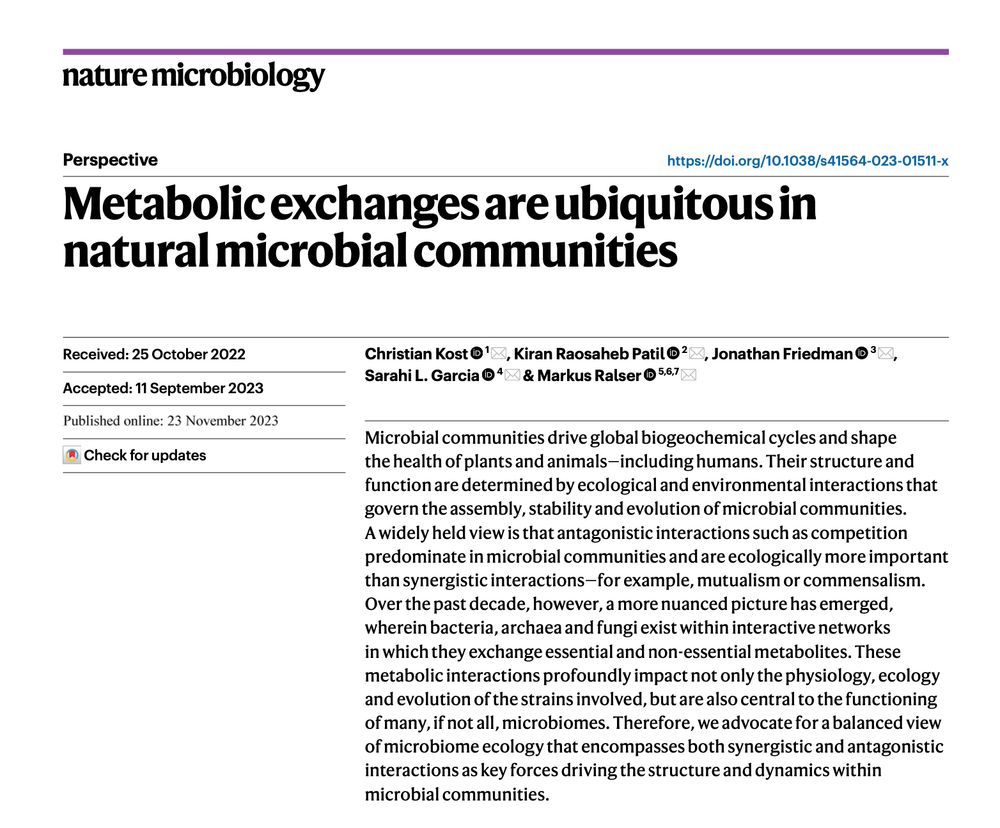Gabriel Leventhal
@gaberoo.bsky.social
1K followers
920 following
23 posts
Microbial evolutionary ecologist
CSO of pharmabiome.com
Posts
Media
Videos
Starter Packs
Gabriel Leventhal
@gaberoo.bsky.social
· Nov 26

A framework for understanding collective microbiome metabolism - Nature Microbiology
This Perspective explores why microbiome members perform partial metabolism of substrates and suggests that proteome efficiency is a driver of collective microbiome metabolism.
www.nature.com
Gabriel Leventhal
@gaberoo.bsky.social
· Nov 21
Gabriel Leventhal
@gaberoo.bsky.social
· Nov 20
Gabriel Leventhal
@gaberoo.bsky.social
· Nov 20
Reposted by Gabriel Leventhal
Greg Medlock
@gregmedlock.bsky.social
· Nov 10
Reposted by Gabriel Leventhal
Gabriel Leventhal
@gaberoo.bsky.social
· Nov 25
Gabriel Leventhal
@gaberoo.bsky.social
· Nov 25
Gabriel Leventhal
@gaberoo.bsky.social
· Nov 25
Gabriel Leventhal
@gaberoo.bsky.social
· Nov 24
Gabriel Leventhal
@gaberoo.bsky.social
· Nov 24
Gabriel Leventhal
@gaberoo.bsky.social
· Nov 24
Gabriel Leventhal
@gaberoo.bsky.social
· Nov 24
Gabriel Leventhal
@gaberoo.bsky.social
· Nov 24
Gabriel Leventhal
@gaberoo.bsky.social
· Nov 24
Gabriel Leventhal
@gaberoo.bsky.social
· Sep 23










